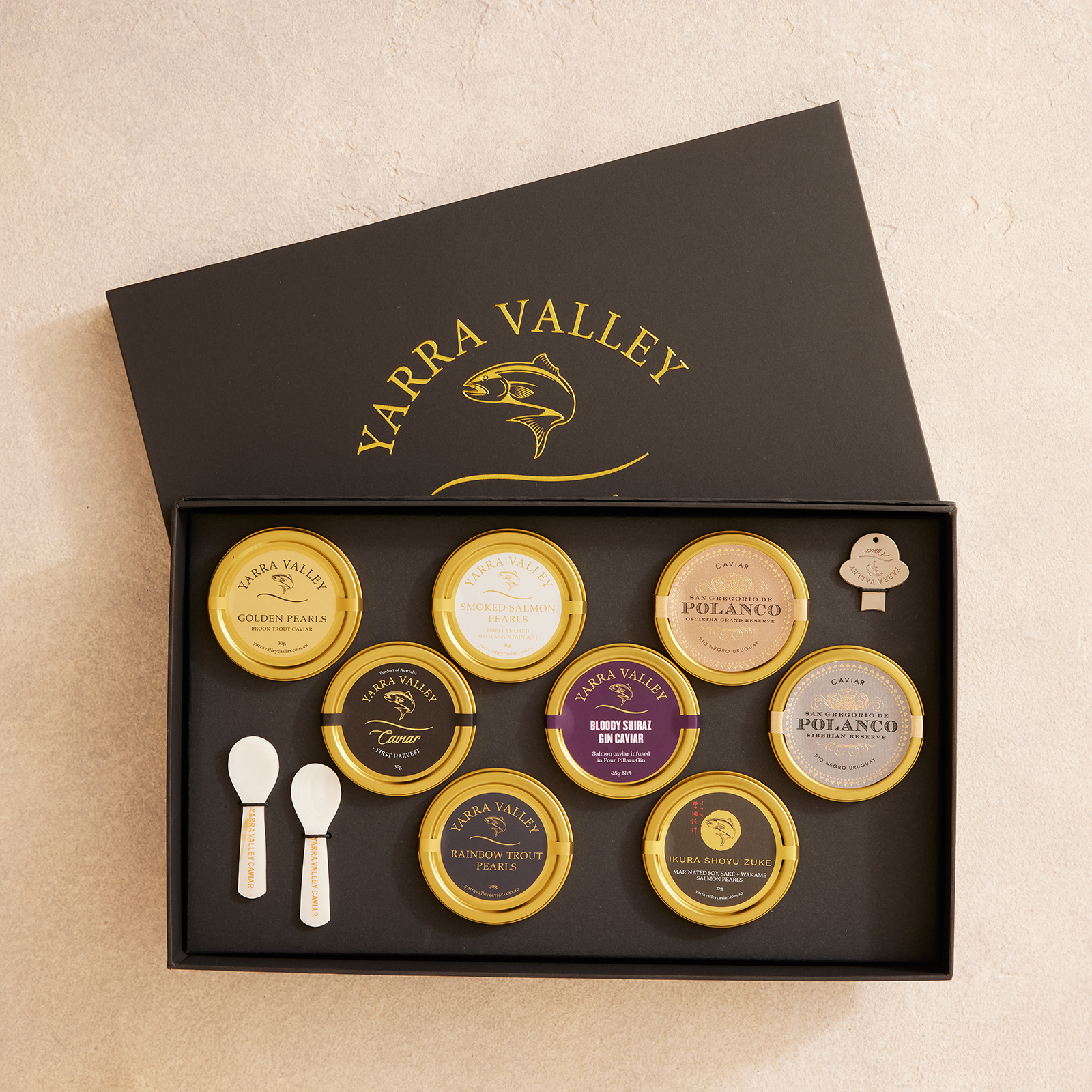There’s no doubt that some of the most expensive foods are also the most indulgent. When you think of fancy food items, you’ll most likely immediately add caviar to the gastronomic menu, along with saffron, foie gras and wagyu beef.
With varieties like white beluga retailing for $25,000 per kilogram, there really is no other food valued quite so high. However, not all of these fish eggs are created equal: depending on where you’re buying it and who from, the prices can vary by numerous digits.
Why is caviar so expensive?
There are five factors that determine the price of caviar:
- The type of fish and its availability
True caviar comes from sturgeon. This species of fish has been depleting in supply since the 20th century due to overfishing and poaching, as well as the destruction of their habitats, pollution of their waters, and damming of their spawning locations. Naturally, the more difficult it is to obtain the product, the more expensive it becomes. Nowadays, wild-caught sturgeon is grown sustainably, regulated by government agencies. - The maturation process of the roe
It roughly takes 7-20 years for a female sturgeon to sexually mature, depending on the species. Producers and farmers of sturgeon caviar are then compelled to wait a long time before seeing any return on their investment. Furthermore, if the roe isn’t harvested at the correct time in the sturgeon’s life, the caviar could be futile and may need to be sold cheaper as it is a low quality product. - The process of harvesting and manufacturing
In addition to harvesting itself, there’s washing, curing, inspecting, ageing, pasteurising and storing, which all takes time and costs money. All of this requires specialised care. And, once the fish are finally mature enough to produce the fully ripped eggs, the fish is usually killed in order to obtain the roe. Then, the process begins all over again with the same decade-long timeframe. Additionally, fish roe is still removed solely by hand, very carefully. - The quality of the caviar
A grading system is used to rate the colour of the egg, its size, maturity, fragrance, firmness and flavour – all of these factors which can vary greatly between each specimen.
Product that is smaller in size and less pleasing to the eye is labelled as “select.” Average to slightly above average caviar will be marketed as “classic” or “royal.” The largest pearls in the rarest colours will have titles like “supreme” and “imperial.” - Supply & demand
Naturally, the age-old economics law of supply and demand will affect the price of caviar. As long as this product is coveted, it will always fetch a high price tag.
How much is caviar?
As a rough estimate, here are the prices of caviar in Australia as of 2021 1:
- Black Caviar (Swedish Lumpfish): $120/kg
- Black Caviar (Iranian Beluga): $10,100/kg
- Red Caviar (Mediterranean Sturgeon): $400/kg
- Gold Caviar (Imperial): $3,150/kg
- Gold Caviar (Russian Osetra): $4,500/kg
Is caviar worth the cost?
If you wish to order caviar at an upmarket restaurant, you can expect to pay a minimum of $100-$200 for the service. While this type of indulgence can be reserved to commemorate special occasions, there is a much more affordable way to enjoy caviar: at home.
Are you ready to indulge in caviar at home? Shop online at Yarra Valley Caviar today
